Author: Matt Del Fiacco
A staple in many regions of the world, rice is the seed of a specific species of grass that, in addition to being eaten, can be used to produce a wide variety of consumables including flour, glue, and sake. It can also be used as a way to impart a light, clean character to beer without contributing any color, something certain brewers of mass market lagers are known for, which has led many to view rice as an ingredient to be wholly avoided.
Suspending judgement for a moment, one will see there are a number of places rice actually fits in rather well even in modern craft brewing, for example, including a portion in a hyper-hopped Triple IPA to help keep it from becoming too syrupy. Due to its high starch content, rice needs to be gelatinized via cooking prior to use, or brewers can buy flaked rice that can be added directly to the mash.
I’d never used flaked rice in a beer. This may be because I don’t brew many American lagers, and in my mind that is where this ingredient best fits. But I’ve finally started settling into my new home, and with an upcoming house warming party on the horizon, I wanted to brew a beer that would be great for easy summer drinking and satisfy the palates of my macro-drinking and craft-drinking relatives alike. Interested to learn more about what flaked rice contributes to beer, I figured I’d put this one to the test.
| PURPOSE |
To evaluate the differences between a lager made with a portion of flaked rice and one made with no rice.
| METHODS |
Wanting to focus on a style that’s known for including rice, I went with a simple American Lager for this xBmt
Mr. Rice Guy
Recipe Details
| Batch Size | Boil Time | IBU | SRM | Est. OG | Est. FG | ABV |
|---|---|---|---|---|---|---|
| 5.5 gal | 60 min | 15.3 IBUs | 2.9 SRM | 1.038 | 1.008 | 3.9 % |
| Actuals | 1.038 | 1.005 | 4.3 % | |||
Fermentables
| Name | Amount | % |
|---|---|---|
| Pale Malt, 2-Row (Rahr) | 7.75 lbs | 79.49 |
| Rice, Flaked | 2 lbs | 20.51 |
Hops
| Name | Amount | Time | Use | Form | Alpha % |
|---|---|---|---|---|---|
| Hallertau | 25.6 g | 60 min | Boil | Pellet | 4.5 |
| Hallertau | 20 g | 1 min | Boil | Pellet | 4.5 |
Yeast
| Name | Lab | Attenuation | Temperature |
|---|---|---|---|
| Harvest (L17) | Imperial Yeast | 72% | 50°F - 60°F |
Notes
| Water Profile: Ca 54 | Mg 11 | Na 25 | SO4 81 | Cl 65 |
Download
| Download this recipe's BeerXML file |
I spun up a couple starters of Imperial Yeast L17 Harvest a couple days ahead of time.
Having collected and adjusted my brewing water the night before, I started my brew day by setting the controllers to warm each batch to strike temperature.
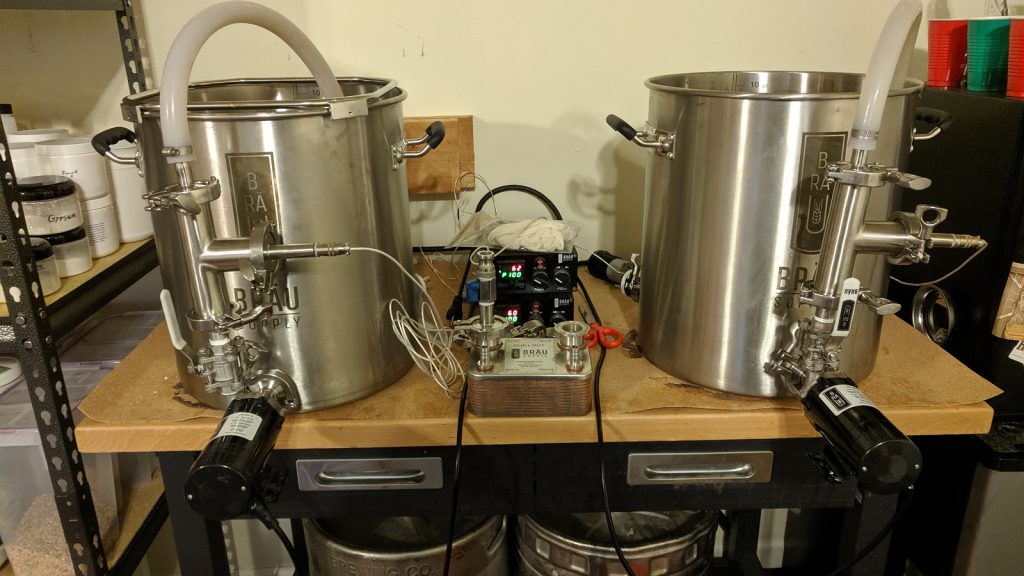
As the water was heating, I weighed out and milled both sets of grain.
Next, I weighed out the flaked rice that would be added to one batch.
With the water adequately heated, I mashed in and checked to ensure each batch hit the same target mash temperature.
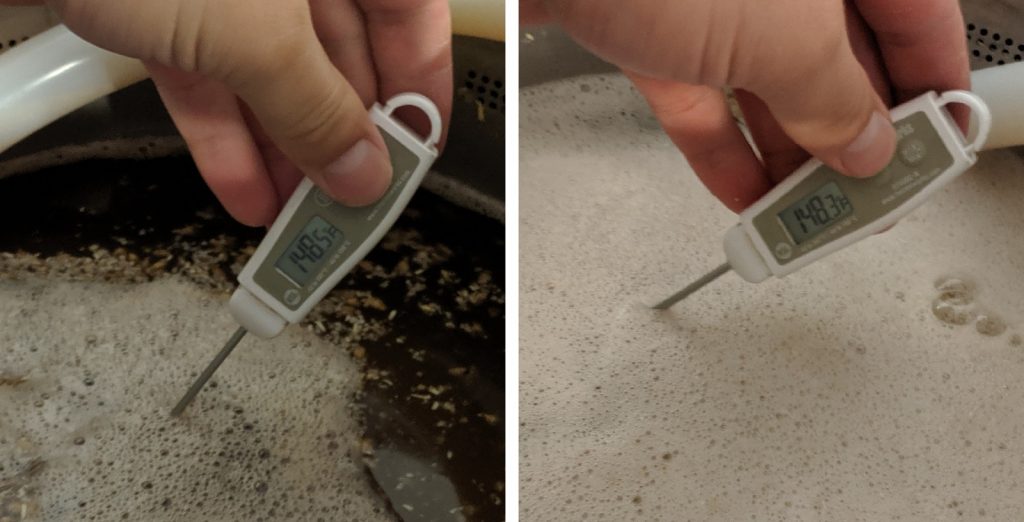
I stole samples about 15 minutes into each mash for pH measurement and found them to be essentially the same.
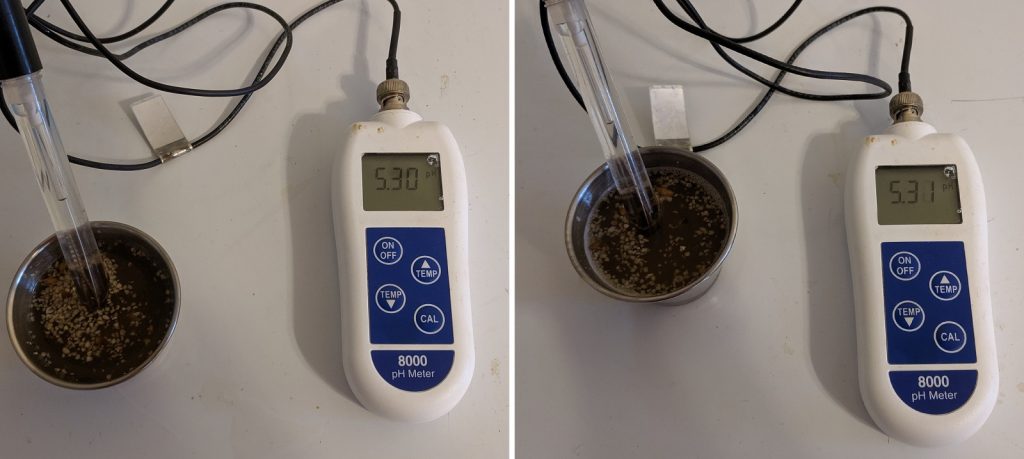
I weighed out the kettle hop additions for each batch during the mash rest.
Following the 60 minute saccharification rest, I removed the grains and began heating the wort. Each wort was then boiled for 60 minutes with hops added per the recipe, after which they were run through a plate chiller on their way to sanitized fermentation kegs.
Hydrometer measurements revealed the wort with flaked rice achieved a slightly lower OG than the all barley malt wort.
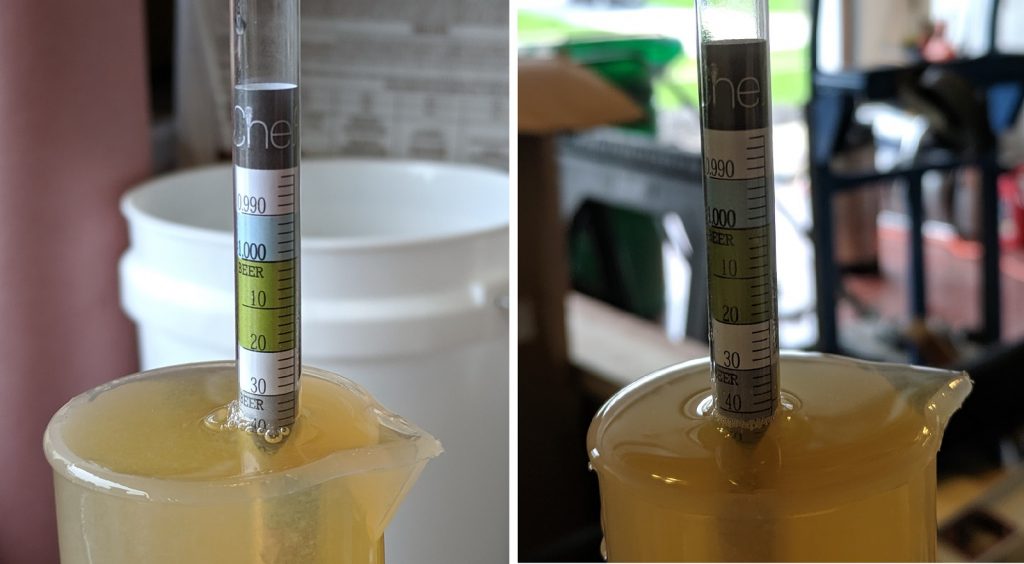
Samples of the chilled worts showed the one made with rice was slightly paler in color.
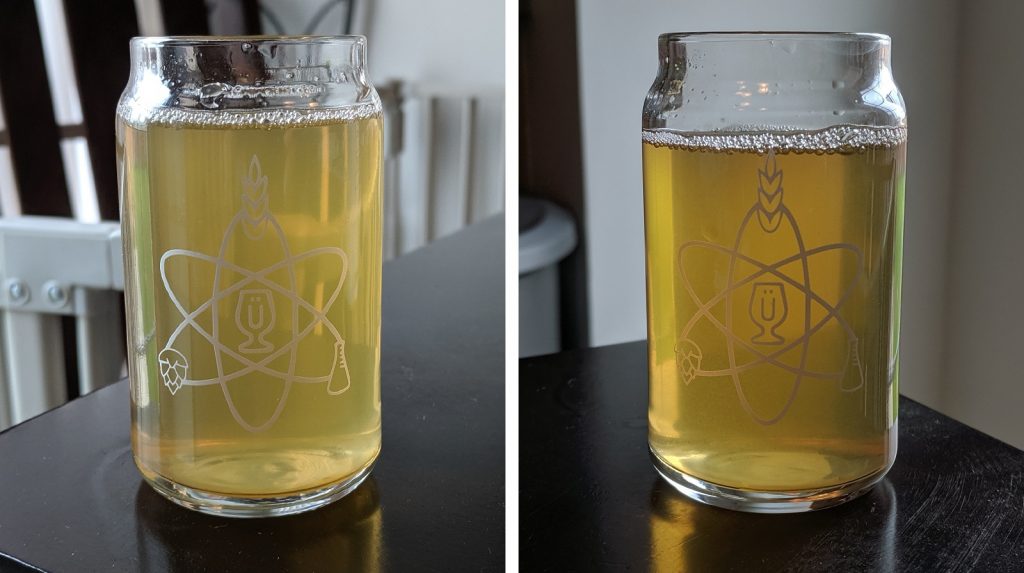
The filled fermentation kegs were placed next to each other in a chamber controlled to 48°F/9°C and given time to finish chilling before I returned to pitch the yeast.
Fermentation kicked off swiftly and activity was beginning to slow after 5 days, so I pressure transferred the beers to lagering/serving kegs.
After attaching spunding valves to each keg, I set the temperature in the chamber to 66°F/19°C and left the beers alone for a 3 day diacetyl rest. Hydrometer measurements taken at this point showed the beers finished at a similar FG, which given the difference in OG, indicated the flaked rice beer attenuated slightly less than the all barley beer.
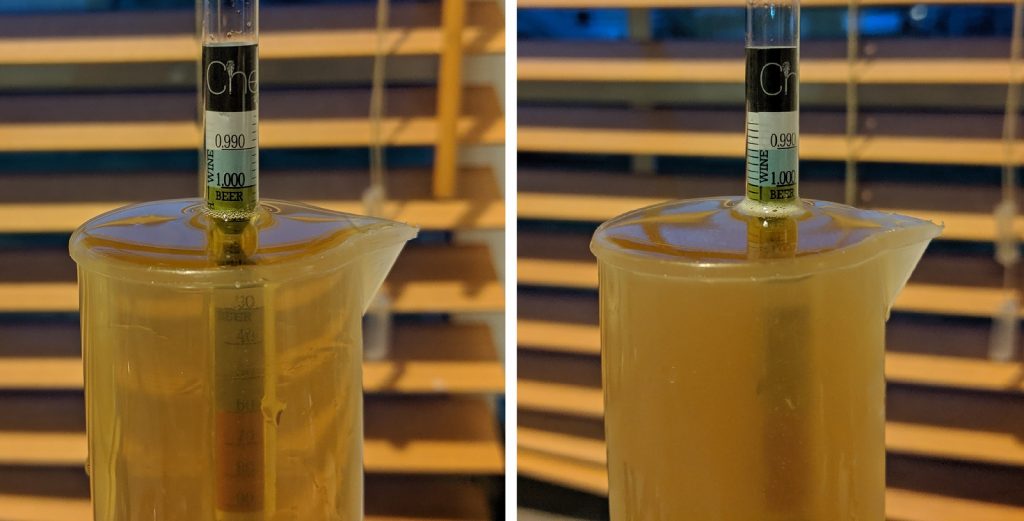
The beers were burst carbonated and allowed to cold condition for a week before they were ready to serve to participants.

| RESULTS |
Cheers to the Wingnut Brew Club for allowing me to collect data for this xBmt during a local club meeting! A total of 25 people of varying levels of experience participated in this xBmt. Each participant was served 2 samples of the flaked rice beer and 1 sample of the all barley malt beer in different colored opaque cups then asked to identify the unique sample. While 12 tasters (p<0.05) would have had to identify the unique sample in order to reach statistical significance, only 11 (p=0.18) made the accurate selection, indicating participants in this xBmt could not reliably distinguish an American Lager made with a portion of flaked rice from one made without flaked rice.
My Impressions: Out of 5 semi-blind triangle tests, I was able to identify the correct beer 3 times, which isn’t perfect, though a hair more than random chance. To me, the beer made with flaked rice tasted slightly sweeter and seemed to have a generally lighter malt character that was quite pleasant, while I perceived the beer made without flaked rice as having a more prominent cracker character similar to what I get in classic European lagers. Ultimately, while both beers had a soft hop character and light malt flavor, I had a slight preference for the one made with flaked rice.
| DISCUSSION |
While barley and rice are both originate from a type of grass, they both play a unique role when it comes to their use in the brewing process. Whereas the bulk of the fermentables in most beers come from enzymatically converted starches contained in barley malt, rice is typically used as a means of lightening body without contributing much in the way of aroma, flavor, or color. Interestingly, tasters in this xBmt were unable to reliably tell apart an American Lager made with 20% flaked rice from one made with just barley malt, suggesting its impact may not be as perceptible as presumed.
Considering possible implications of these results, there are likely brewers on both sides of the rice debate who feel their perspective has been justified. For the sympathizers, these results show the grain can be used as a substitute for barley without negatively affecting flavor, while the anti-ricers may view this is proof the grain contributes nothing positive to beer. C’est la vie, c’est la mort.
While these findings suggest the beers in this xBmt were perceptibly similar, there were a some objectively measurable differences. The beer made with flaked rice was came it at 0.004 OG lower than the all barley malt beer, indicating less contribution of fermentable sugars. Additionally, the flaked rice beer was slightly paler in color and noticeably clearer than its all barley malt counterpart.
This being my first time using rice in my own brewing, I admittedly expected it to have a more drastic impact than it did, especially considering all the hate it gets. Of course, this is a single data point from a single xBmt on a single style of beer, it’s entirely possible flaked rice would be more noticeable in different situations. Still, this experience was positive for me and left me interested not only in exBEERimenting with rice in the future, but brewing more American Lager.
If you have any thoughts about this xBmt, please do not hesitate to share in the comments section below!
Support Brülosophy In Style!
All designs are available in various colors and sizes on Amazon!
Follow Brülosophy on:
FACEBOOK | TWITTER | INSTAGRAM
If you enjoy this stuff and feel compelled to support Brulosophy.com, please check out the Support page for details on how you can very easily do so. Thanks!


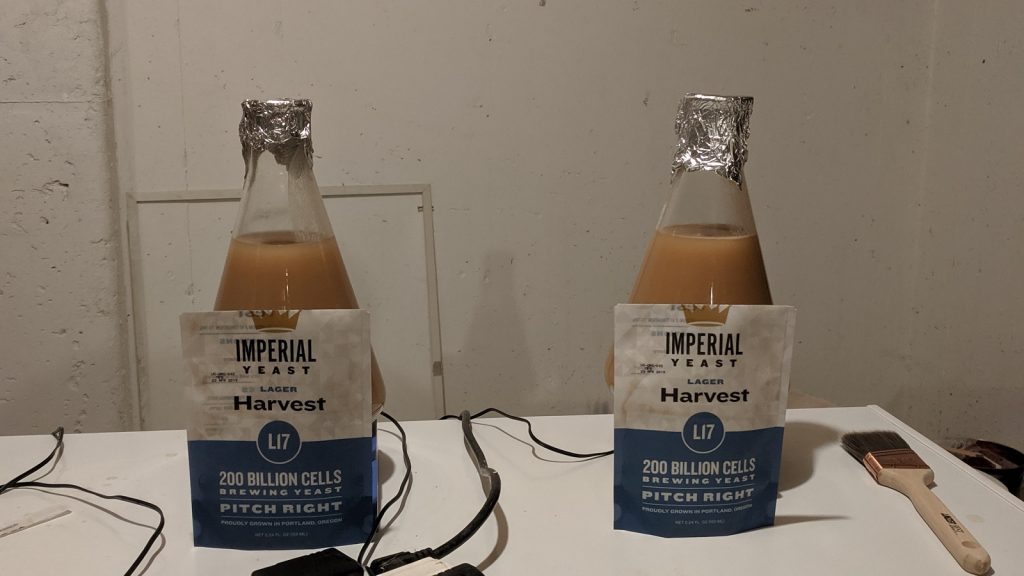

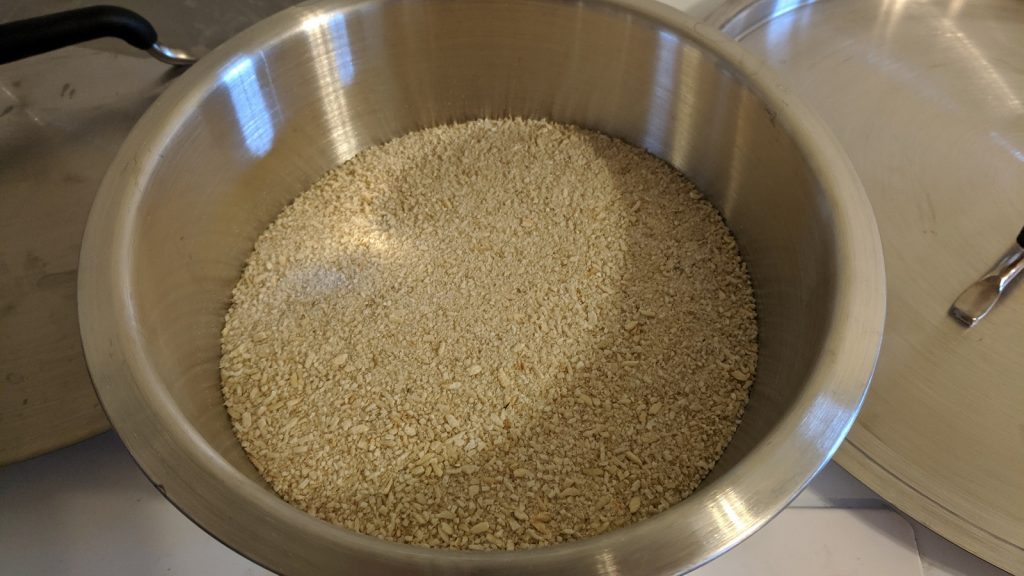
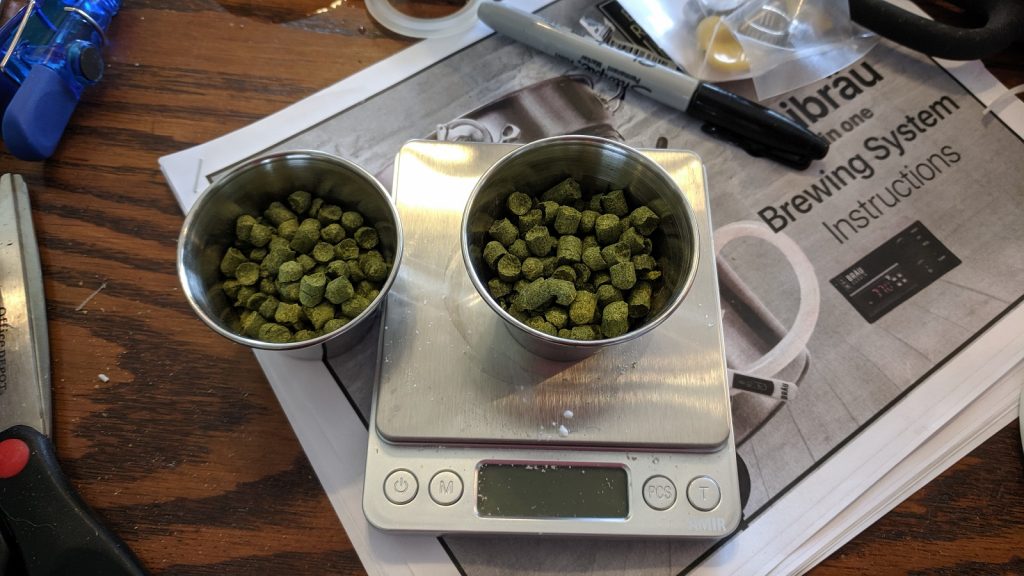
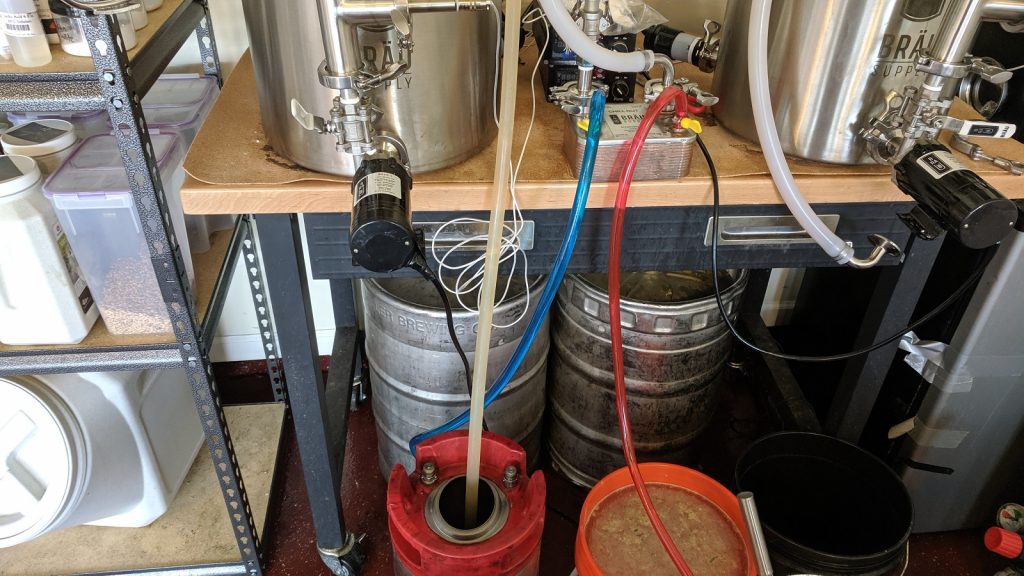
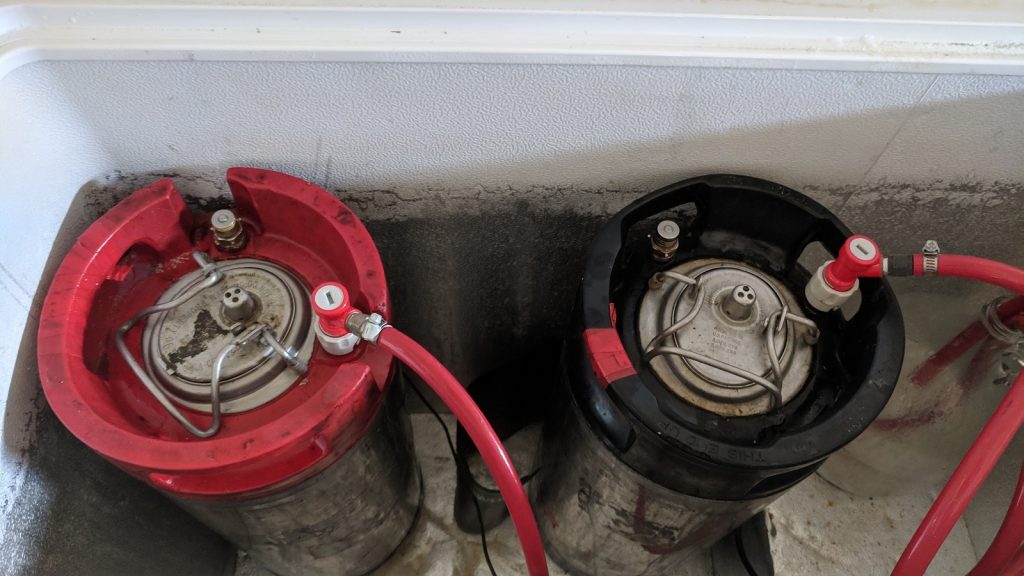
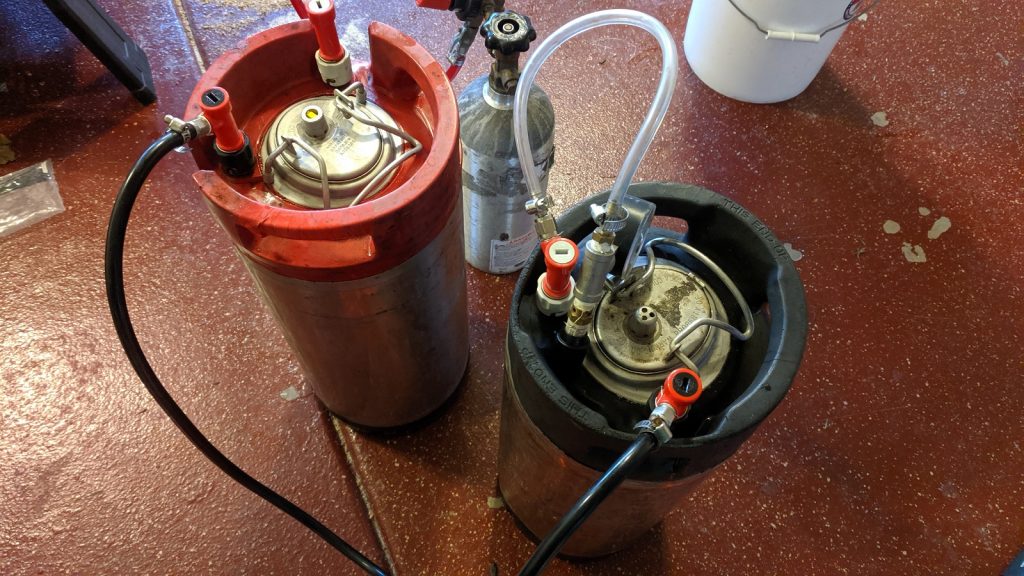











35 thoughts on “exBEERiment | Impact Flaked Rice Has On An American Lager”
I guess numbers need to be filled:
While XX tasters (p<0.05) would have had to identify the unique sample in order to reach statistical significance, only XX (p=0.XX)
Have since been updated, cheers!
Typos again in the results: “XX”
Thanks for catching that! Updated.
A total of how many?
25! Sorry about that, forgot to hit that update button with the last edits.
So confused (or maybe it was just the lazy writing/editing). Did the rice beer use the same amount of barley malt as the all barley beer with additional rice? That seems like the case based on the writing. If so then I have many many questions. Moreover what’s with the XX for the triangle test? Are these experiments so formulaic that you just enter in numbers and you forgot this time? Seems surprising considering that these numbers are probably the most important aspect. Or do you just just make up these numbers? Finally….rice?…I can’t think of anything more boring to be honest
>Did the rice beer use the same amount of barley malt as the all barley beer with additional rice?
No, and I understand the confusion. There had been a line clarifying this in my draft. For all of the “comparison” experiments, where we compare something like flaked rice or carahelle to none, it is all by equal weights. So each batch had 9.75 lbs of total malt bill, one of them was ~20% flaked rice. So if that sparks more questions, lay them on me.
>Are these experiments so formulaic that you just enter in numbers
Perhaps surprisingly, mathematical formulas tend to be a bit “formulaic”. The results section is always a copy/paste of a template, updated to reflect the numbers that we gather through testing. The calculation for sample size is in fact a calculation. This template update wasn’t saved, but has since been fixed!
>Finally….rice?
Rice! Perhaps boring to you, which is totally fine. Not thrilling to me before the experiment either, but I’ll likely start using flaked rice in my American Lagers now.
Why not normalize recipes for PPG instead of weight? This would seem to “fix” the issue of differing gravities or at least get you closer to equal.
For example, Flaked Rice appears to be 32 ppg versus 37 ppg for 2-row. So more would be needed lb per lb in the rice recipe.
Very interesting topic, thanks for this one. Also, it’s impressive that brulosophy posts are always punctual and any typos are quickly corrected. Does not strike me as lazy, to be honest.
Isomerization makes a good point that also could explain the difference in OG’s here.
Imagining this experiment re-done using more flaked rice to extract another 4 OG points (about 11 oz or an increase of ~33%), I could believe the difference in finished beers might then be large enough to be “statistically significant.”
I applaud you for handling this character with class.
Hi Matti-thanks!
What’s with the hateful comments Brendan? This site does a great service by providing input on a lot of interesting homebrewing questions. Also, templates are commonly used to guide the format of scientific reports. Not only do they provide a level of consistency that is important for scientific rigor, I don’t know how the site could be as productive as they are without the use of a starting template. Cheers!
“hateful comments”? wow that’s a bit much, Jeffrey. “frustrated comments”, possibly. Maybe you didn’t see the first version when half the numbers weren’t even filled in. My issue was more in line with “if they can’t be bothered to edit even a simple template, how much can I trust their data?” Also for the record, my physical science field only uses templates for very low-level instructional labs. (There’d be educational and plagiarism issues otherwise.)
Very interesting to me as I’ve used rice a lot in lagers, mainly for clarity and (claimed) crispness. I’ve wondered for a while if it actually makes lagers crisper, and had started to suspect it makes little difference to taste. This experiment supports that suspicion.
I can’t get hold of flaked rice in the UK so have to pre-boil cheap long grain rice, which adds a significant complication to brewday and can sometimes cause problems if the rice sticks to the bottom of the pan during boiling and burns (which definitely affects flavour…). From a cost point of view, there isn’t much point in using rice as barley is cheaper to me. I do like the extra clarity, but not so much the watery colour.
I definitely noticed the clarity difference, no real question there. I’m really interested to try different kinds of rice now to be honest.
Malt Miller sells flaked rice in the UK – that’s where I get mine.
I’ve been steadily increasing the rice content (I use generic Instant Rice) for my American Lagers. Went from 25% to 30%, now up to 33% due to an over abundance of malt flavor.
That’s quite a bit! I’ll have to try increasing it to that percentage in my next go.
Interesting to hear you thought the flaked rice beer had a sweeter finish. I always hear rice adds a crispness to the beer. Any thoughts on why this was? Maybe less attenuation? Rice is definitely on my to brew with list in the future. For now, I’m going to finally try brewing up a cider you guys have published about in the past. I recently relocated and all of my brew gear is packed up. So, a quick trip to the store for some juice and yeast sounded like a great place to start in order to get the beer frig stocked up again. Thanks for the xbrmt!
Love the idea of using harvest to make a lager that can win over macro and craft enthusiasts alike. How did the beer taste? Did the harvest yeast impart a more characterful yeast component, making seem more “crafty” and flavorful? Or did it just taste like BMC?
Interesting that you call out IPAs at the start – I’ve always used carapils to lengthen them out a bit, but given it’s foam negative qualities and the previous results on carapils, I might have to give this a go!
Eckerts Malting and Brewing makes several styles of 100% rice beers. You should definitely try them out. I believe their in central/northern Ca.
When you say that long grain rice has to be boiled to use does that mean that the water is added to the mash as well or just strain the rice?
I did a cream ale experiment with flaked rice vs. flaked corn. I don’t have the audience to do triangle tests, but in my side by side not blind tasting of the beers, pre-kegging, I thought they were so close that I didn’t want to bother devoting the floor space of my keezer to two 2.5 gallon kegs, and I combined them into a single 5 gallon keg. If pressed, I may have had a slight preference for the corn? Hard to say. In an earlier experiment with cream ale, the variable of interest was 2-row vs. 6-row. I kegged these up separately, as I felt I could tell a difference in the uncarbonated beer. I frequently tasted them side by side and while I could usually taste a difference, I didn’t really feel a preference. Barley is a larger percentage of the recipe than the adjunct (75-85% barley), so maybe this is why changing the barley had a stronger impact than changing the adjunct.
I thought I remembered Brulosophy doing a 2-row vs 6-row comparison, and sure enough, a quick search led me here:
https://brulosophy.com/2018/04/09/grain-comparison-2-row-pale-malt-vs-6-row-pale-malt-exbeeriment-results/
Similar to your experience, they concluded there was a perceptible difference, but preference between the two among the tasters was evenly split.
I feel like much of the purported impact of replacing malt with rice could also be achieved by adding plain sugar: thins the body and makes for a lighter flavour. Or,.comparing it to a scenario where you just leave out the malt without subbing anything else in: just bump up the OG without contributing to body, sweetness, or flavour. Again, just what table sugar does. Hmmm…
In the hot minute of brut IPA, when recipes were calling for rice, corn, and added enzymes to dry a beer out, I had the same thought about skipping all that and adding sugar instead. I did no comparative experiment, but did make a dry beer with an enjoyable hop presence.
Regarding extract potential of rice products that you discussed in the podcast prior to the presentation of the experiment, the following specifications come from my personal brewing calculator spreadsheet. The extract potential of Breiss’s pale ale malt is also provided for reference:
Extract Potential
(units of extract•gal/lb)
Breiss pale ale malt 37.0
Rice, raw 38.7
Rice, flaked, Breiss 27.8
Rice, extract 32.9
Rice, solids 38.7
The most comprehensive description of using rice in beer that I have read is Use of Rice in Brewing by Ombretta Marconi, Valeria Sileoni, Dayana Ceccaroni and Giuseppe Perretti, Advances in International Rice Research, 15 March 2017.
It can be found at:
https://www.intechopen.com/books/advances-in-international-rice-research/the-use-of-rice-in-brewing
So I just finished my first rice beer. Inspired by the guys at Basic Brewing, I cooked my rice in my instant pot and then added to the mash. I mashed 3.5lbs pils, 3.0lbs 2row, 0.5lab red wheat, and 1.5lbs (dry weight) rice. OG for this 5gal batch was 1.044 (i actually diluted between mash and boil from 1.039 to 1.034). Beer finished at 1.006, fermented with imperial global lager. Seemed to work great with the instant pot as opposed to flaked and since we get 50lb bags of jasmine rice at costco, way cheaper for me. There is no jasmine aroma in the end as I think any of this left volatizes off in the boil. If you have an instant pot and a standby supply of rice this was a super easy way of making a crushable light lager.
Tom W – We may have been doing the same thing at the same time down to the kind of rice and the instant pot! I went with 75% 2row/ 25% thai rice last week and the instant pot for a SG of 1.036. Mashed at 148f. Fermented with stranda at 85f. Finished at 1.006. Blown away by how delicious the beer is. So much so, I immediately fired up another batch. Definitely sold on rice in chuggable beer and it’s DIRT CHEAP! FWH for 15ibus, small FO addition.
Something that might be helpful for other instant potters, 1:1 rice to water (volume) ratio @ 5 minutes high pressure is great. I typically use metric so I’m able to cram in 1kg of rice (2.2 lbs) = (6.5 cups water + 6.5 cups Thai rice). I think it’s an 8 quart US made instant pot for what it’s worth. Take out the rice and cool to room temperature to not have any temp surprises when trying to hit your mash temp.
Sounds good. I’d like to try that. Can you compare the taste to anything commercially brewed? Also, when you say 25% rice, is that dry weight or cooked weight? Thanks!
Interesting experiment, especially for brewers in Asia with plentiful supplies of a great variety of rice.
Thoughts:
i) Is it possible to source malted rice, and if Yes, any incremental OG benefit over flaked rice?
ii) Would different rice varieties provide any further flavor/feel, eg brown or black rice varieties? (though I’m not sure Jasmine rice would work lol)
iii) Any other supplemental, flavor-enhancing ingredients that might be added to compensate for rice’s blandness? The main point being fermentation to obtain a reasonable ABV, with much diversity of micro and craft brew flavorings being tried now.
Cheers!